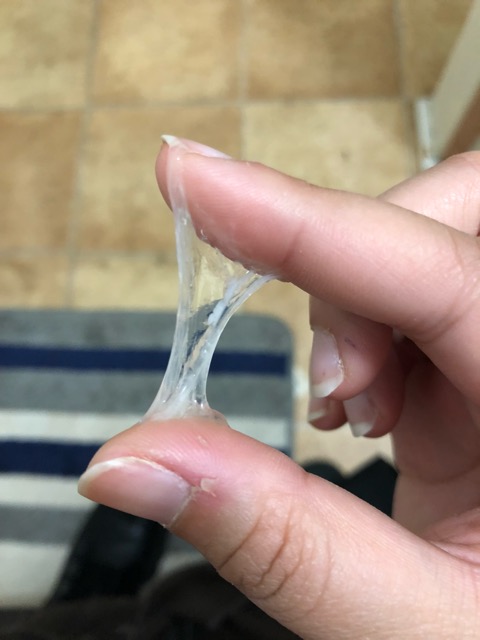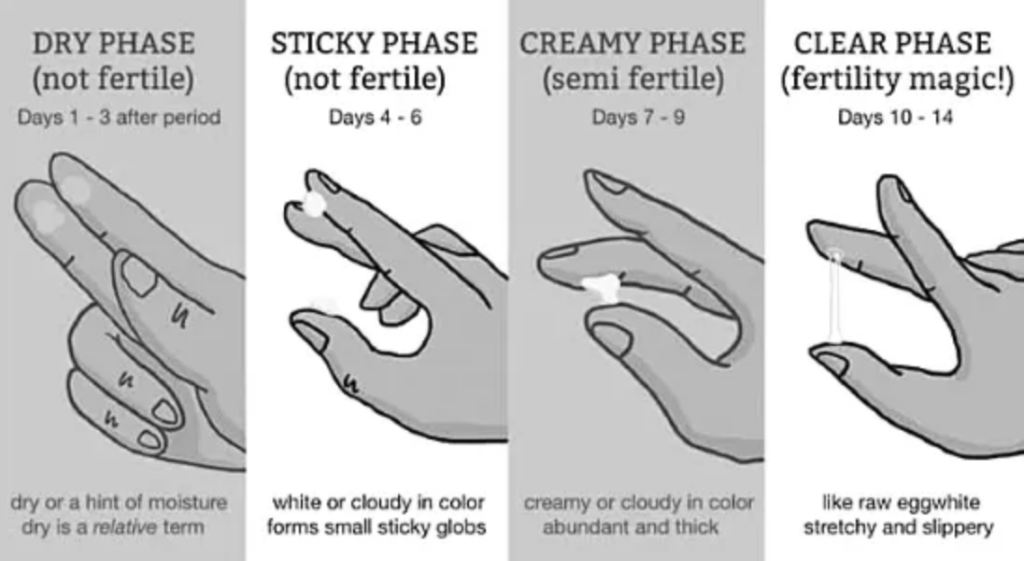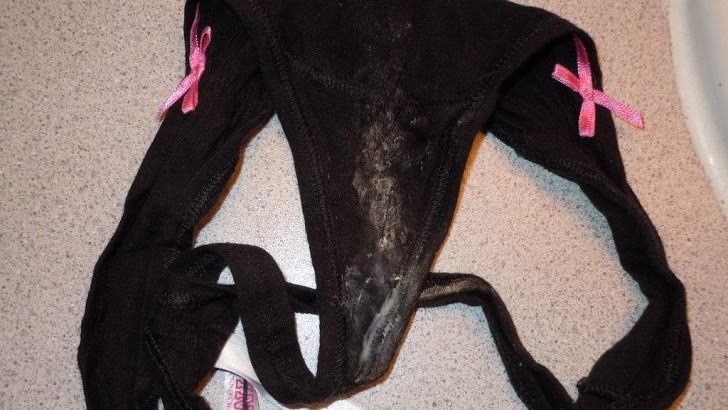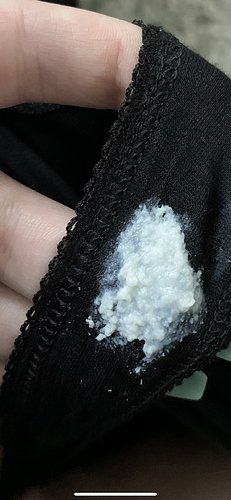Almost 97% of women experience having vaginal discharge – and girls, lemme tell you that it is a completely normal function of a healthy vagina. Vaginal discharge is a natural event, much like the production of saliva. But what causes the body to produce it in the first place?
The liquid is produced by the mucous membrane of the vagina and glands on the cervix to keep the reproductive organs healthy. The discharge we may encounter varies throughout our monthly cycle, but on essentially all occasions, it indicates that everything is in good shape.

However, sometimes, the vaginal discharge may be hinting at a certain disruption in the maintenance process. Did you know that white discharge might sometimes be a sign of an underlying disease?
Yeahhh, not to scare you, but do keep reading to find out what the fluids are tryna tell you…
There are 3 types of vaginal discharge that are often faced by women and each of them speaks to you deeply about your vaginal health!
Egg White Discharge
Throughout your menstrual cycle, you may have a thick, white discharge. This discharge is called leukorrhea, and it is perfectly normal.
Discharge resembling egg whites is frequently a symptom of impending ovulation. It has the perfect viscosity for allowing sperm to pass through the cervix and aiding in fertilisation.
Each month, the actual time of ovulation can vary somewhat. It doesn’t smell or clump up. The discharge is plainly thick and sticky like mucus.

Fertilization requires vaginal discharge that stretches between your fingertips when held apart. And the longer it lasts, the closer the body is to ovulation. It may be difficult at first to detect tiny differences in cervical mucus, which is vaginal discharge generated by glands in the cervix and changes during the cycle. But you’ll get the hang of it in no time!

So to those tryna have a baby, you don’t need an ovulation kit. Simply test out your ovulation process using your fingers with the stickiness of your white discharge as a natural indication of fertility.
Creamy Discharge
A creamier variant appears just before the egg-white discharge. This type of discharge is typical prior to or after ovulation. When you’re trying to conceive, paying attention to your cervical mucus might help you figure out what stage of your cycle you’re in. Keeping track of these changes over the month might also educate you better regarding your body.

The creamy discharge could also possibly be a sign of hormone imbalances. So if you’re a sister with PCOS, PCOD or endometriosis, it’s a signal that your body is going through a hormonal roller coaster.
And for mommies who are trying to conceive, the creamy-white discharge could also potentially indicate that you’re pregnant. Some women produce a thin, milky white discharge during the early stages of pregnancy.
The discharge is caused by hormonal changes that prepare the body for the nine months of pregnancy and can help in the removal of bacteria, pathogens, and dirt. It also aids in the production of a mucus plug in the cervix. This keeps the cervix healthy and inhibits bacteria from spreading into the uterus during pregnancy.
Cottage Cheese Clumps
When you have a thick, white discharge that is clumpy or clotted, you may be experiencing a yeast infection. Your vagina performs the amazing work of controlling the pH balance of the bacteria and fungus that reside in it.

If this balance is severely disturbed, it allows certain harmful bacteria or fungi to thrive and Candida albicans is a fungus that can swiftly grow in the vaginal wall leading to infection, typically causing a yeast infection.
Symptoms of yeast infection:
- Thick discharge with a cottage cheese consistency.
- White discharge that may turn yellow or green.
- A foul odour coming from the vagina.
- Uneasiness or itchiness on the vulva or vagina.
- Swelling or redness around the vulva.
- A burning sensation or pain during urination.
- Pain during intercourse
Having your vagina overflowing with thick or clumpy discharge to secreting smelly fluid may badly affect your mental health, beating down your confidence. In certain circumstances, it may even affect your sexual life if you’re actively involved in sex.
So, if you believe you have a yeast infection or any of the symptoms above please visit a doctor right away or get a pap smear test done!

If the discharge you’re experiencing does not meet those criteria, the excess fluid flowing out of your vagina is a sign of good general health. In other words, it’s a wonderful sign.
By avoiding soaps, scented washes, douches, and other items that strip the vagina of its natural moisture and built-in defences, you can avoid disrupting the pH balance, leading to yeast infection, causing an overflow of vaginal discharge.
The vagina is built to care for itself and prevent new infections. Normal, healthy vaginal discharge plays a crucial function to keep our vajayjay perfectly healthy!
Hey, hold up! Do take a look at these articles before you go…
Pap Culture: Why Pap Smear Tests Are Essential For Our Vaginas










